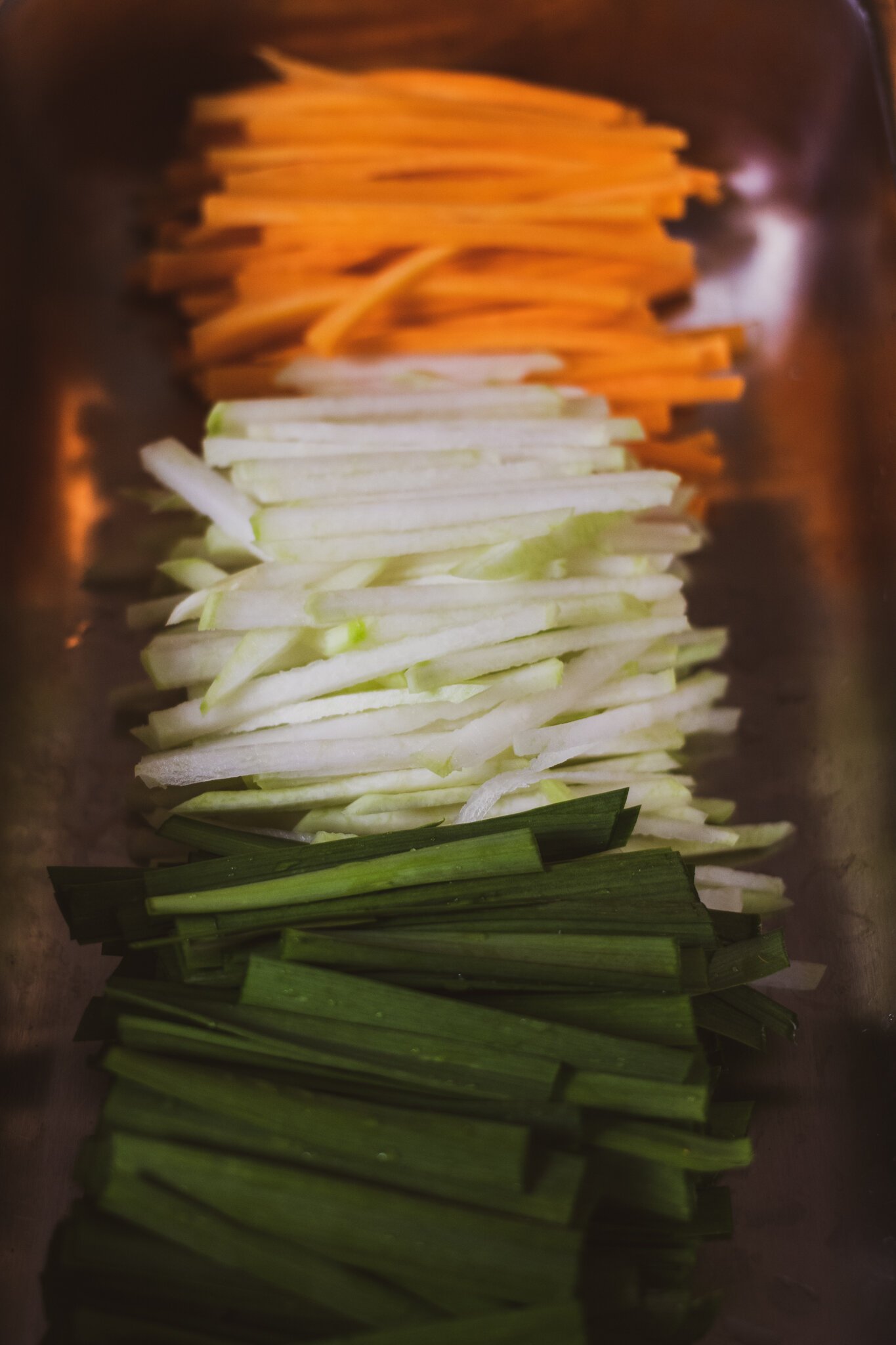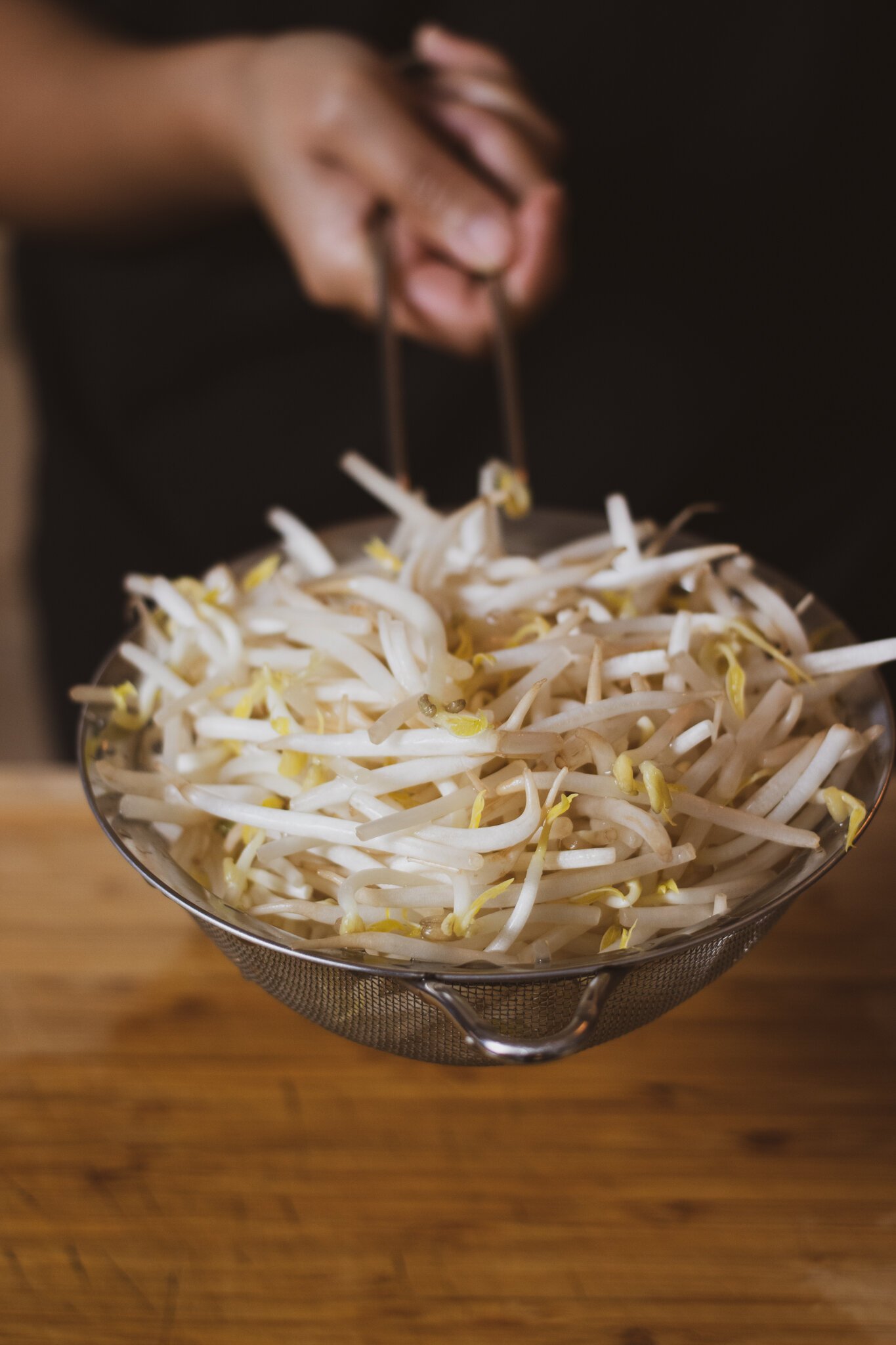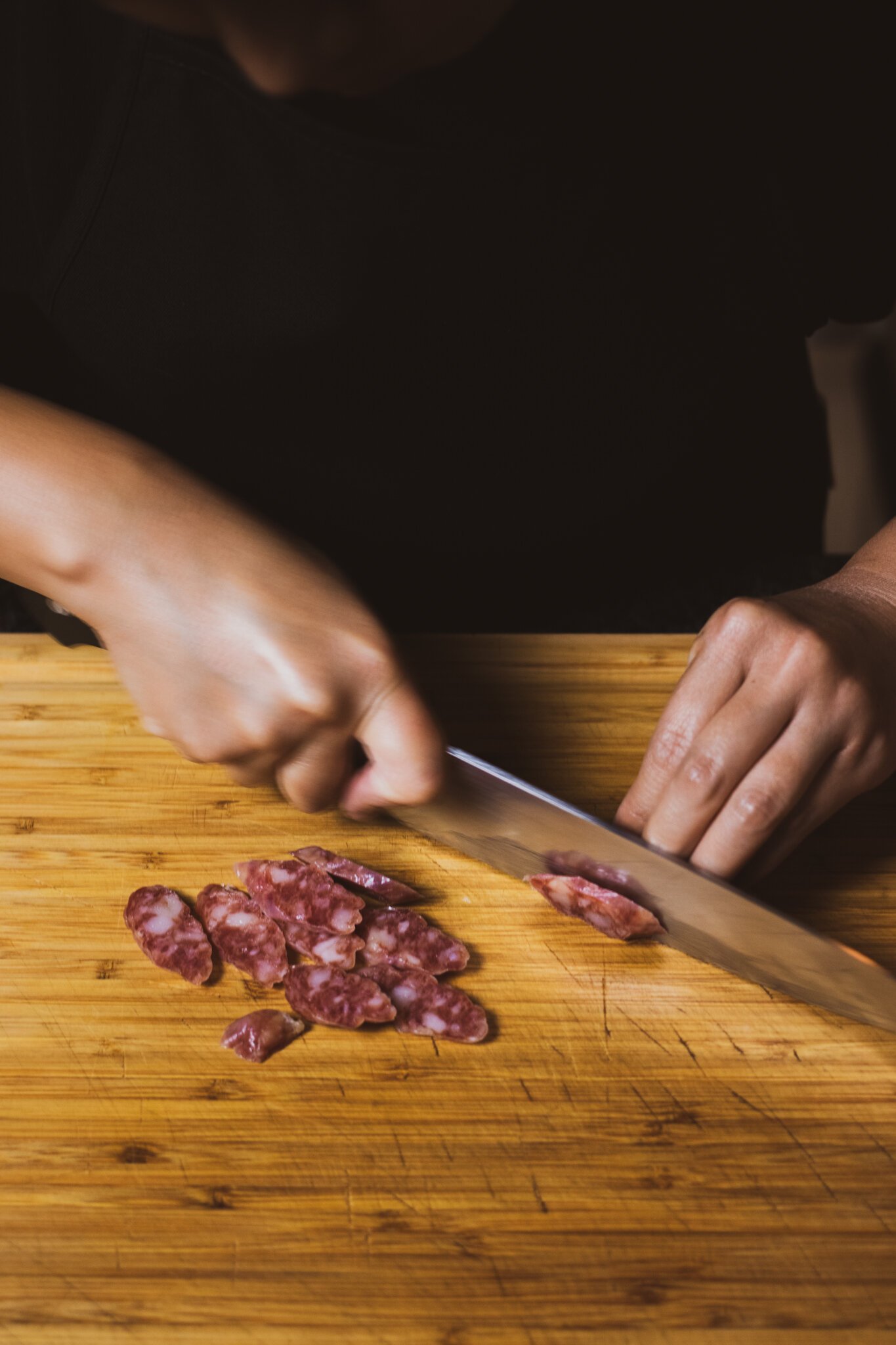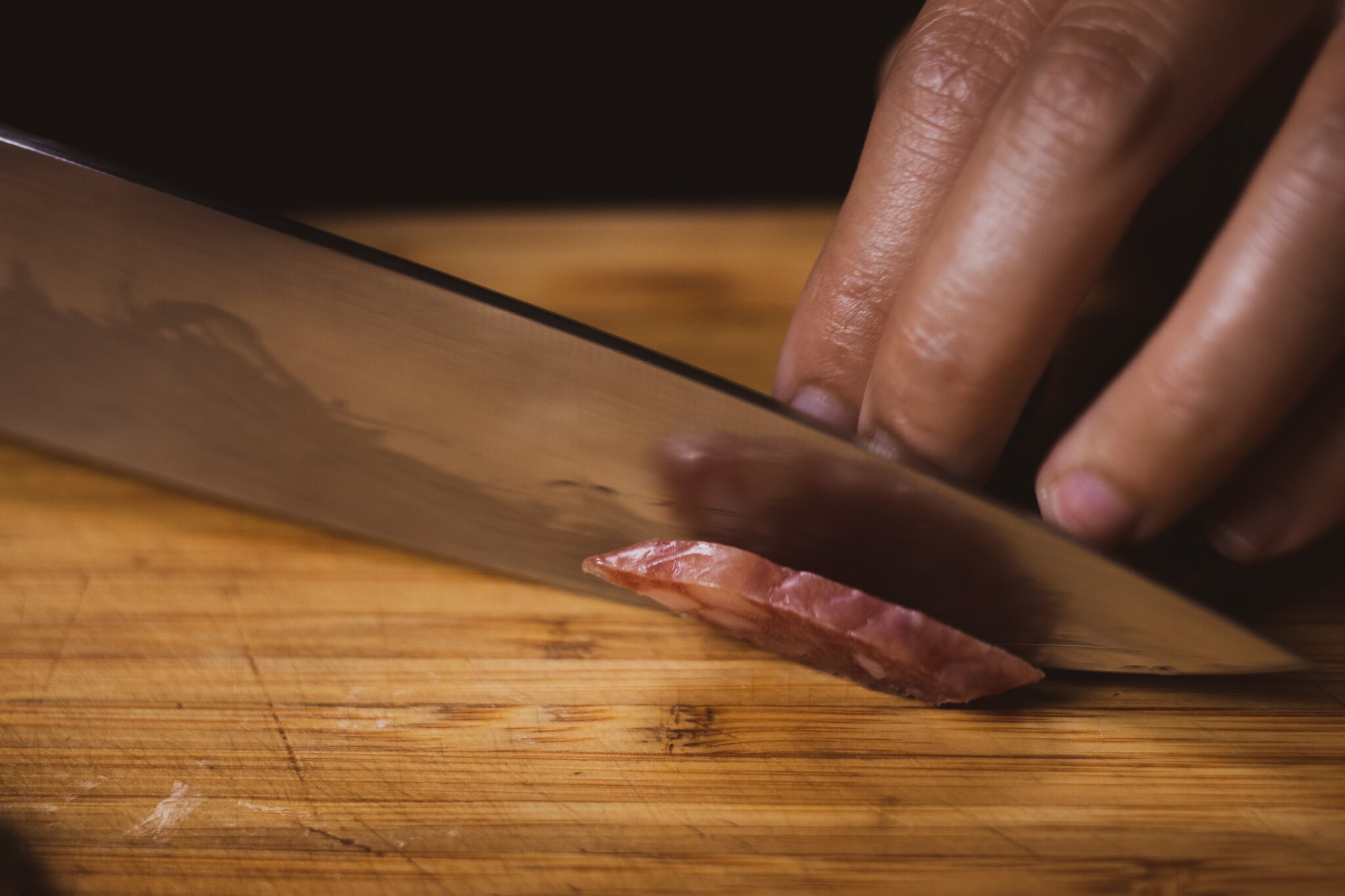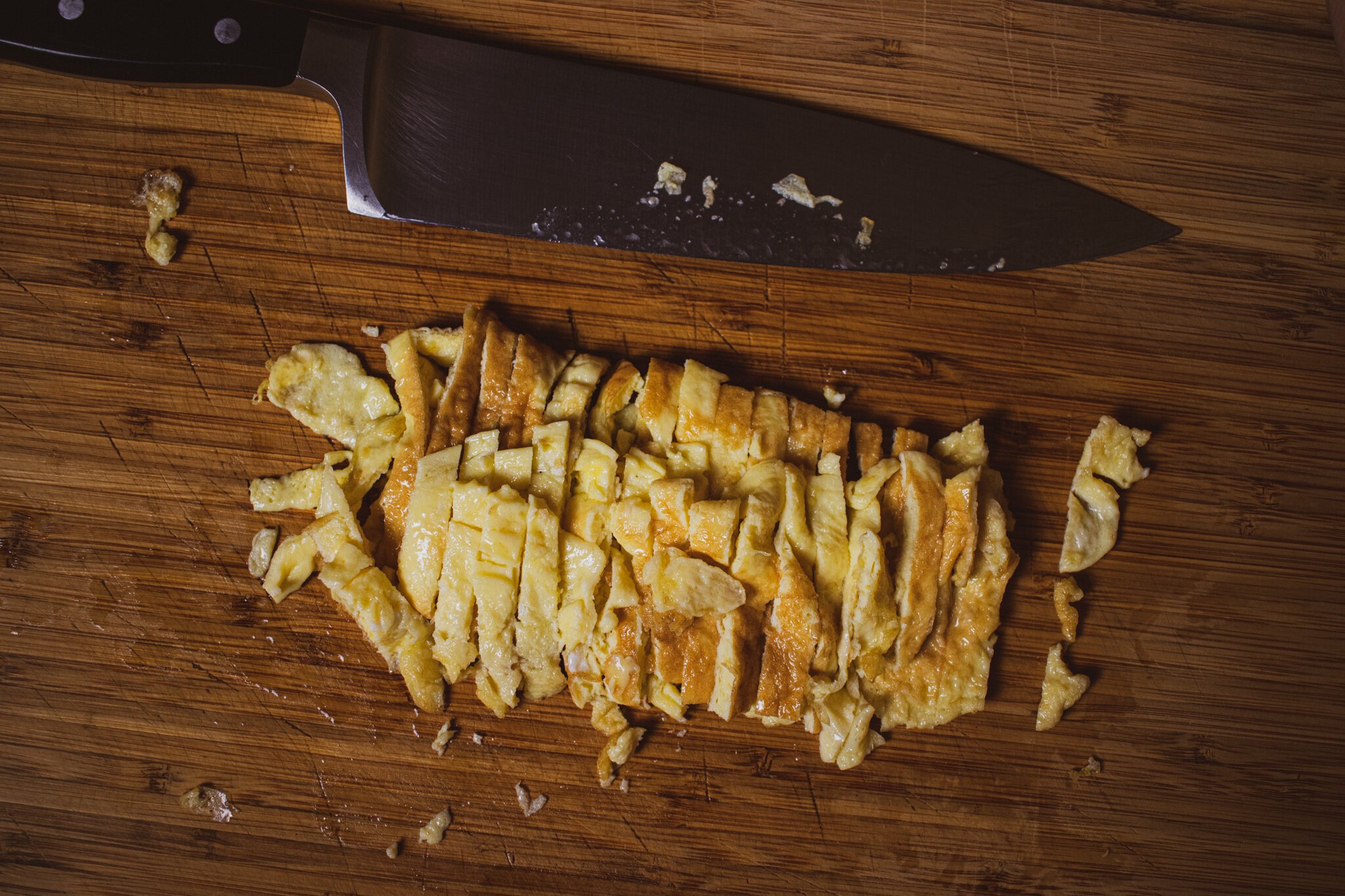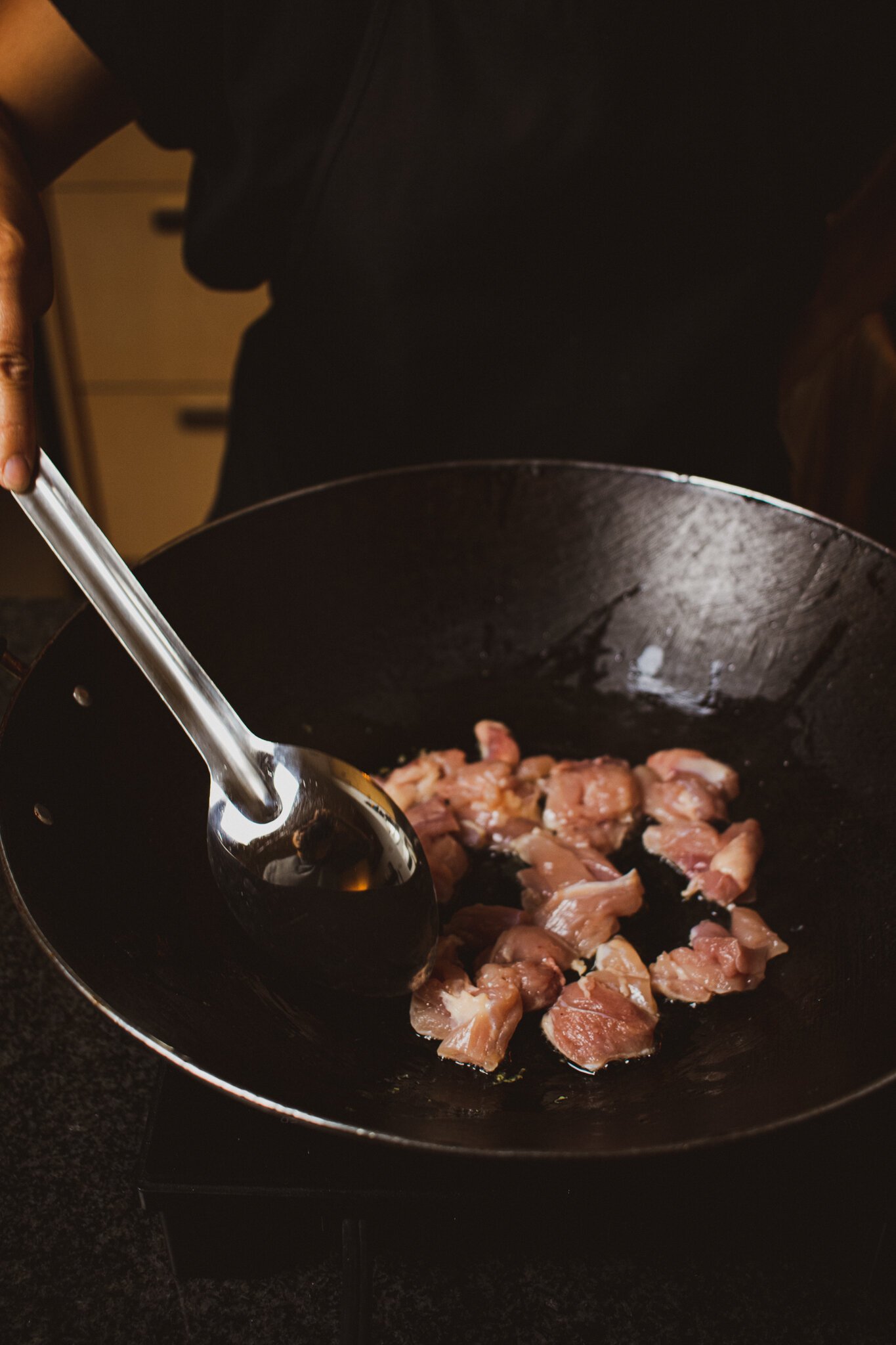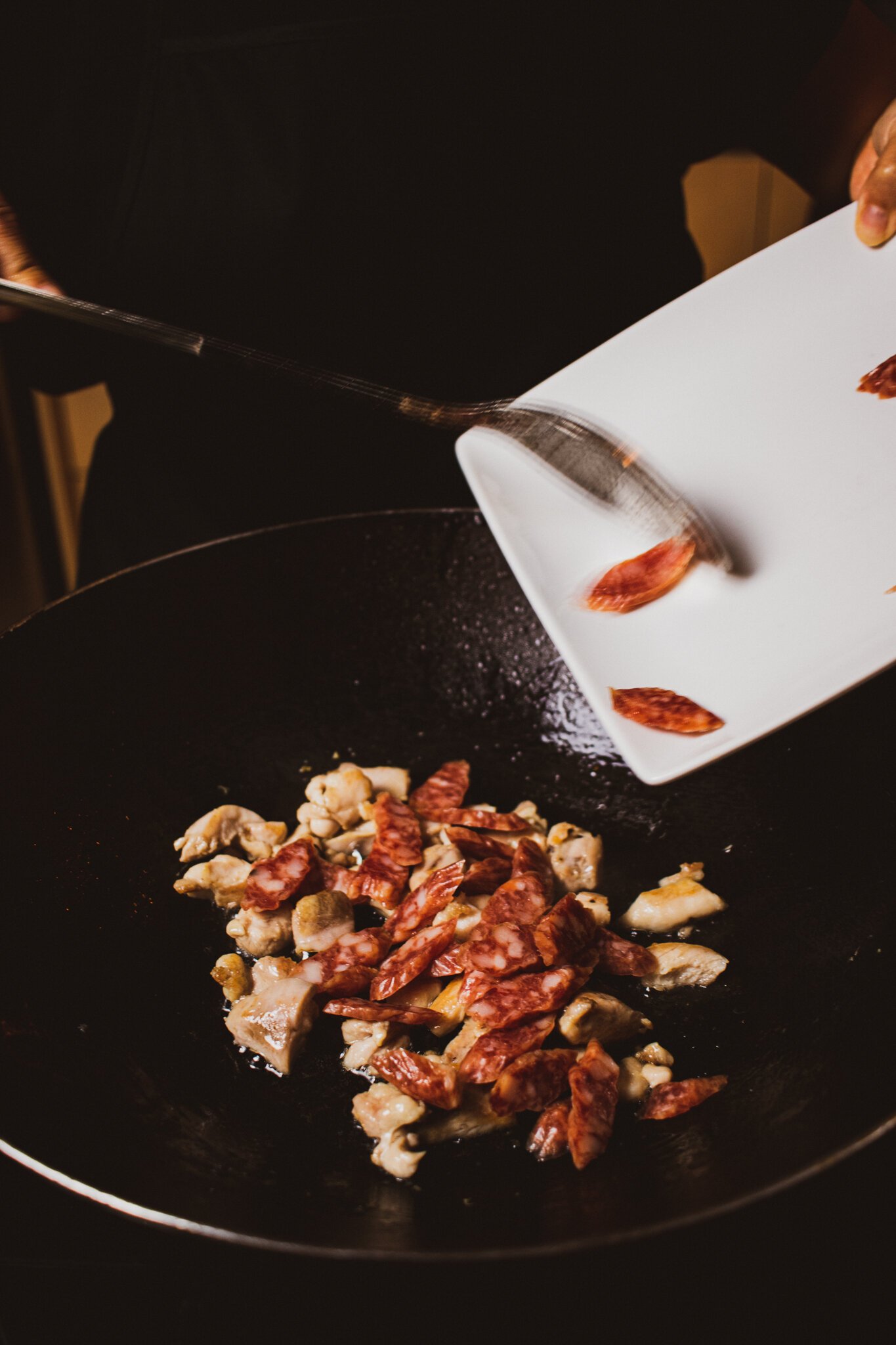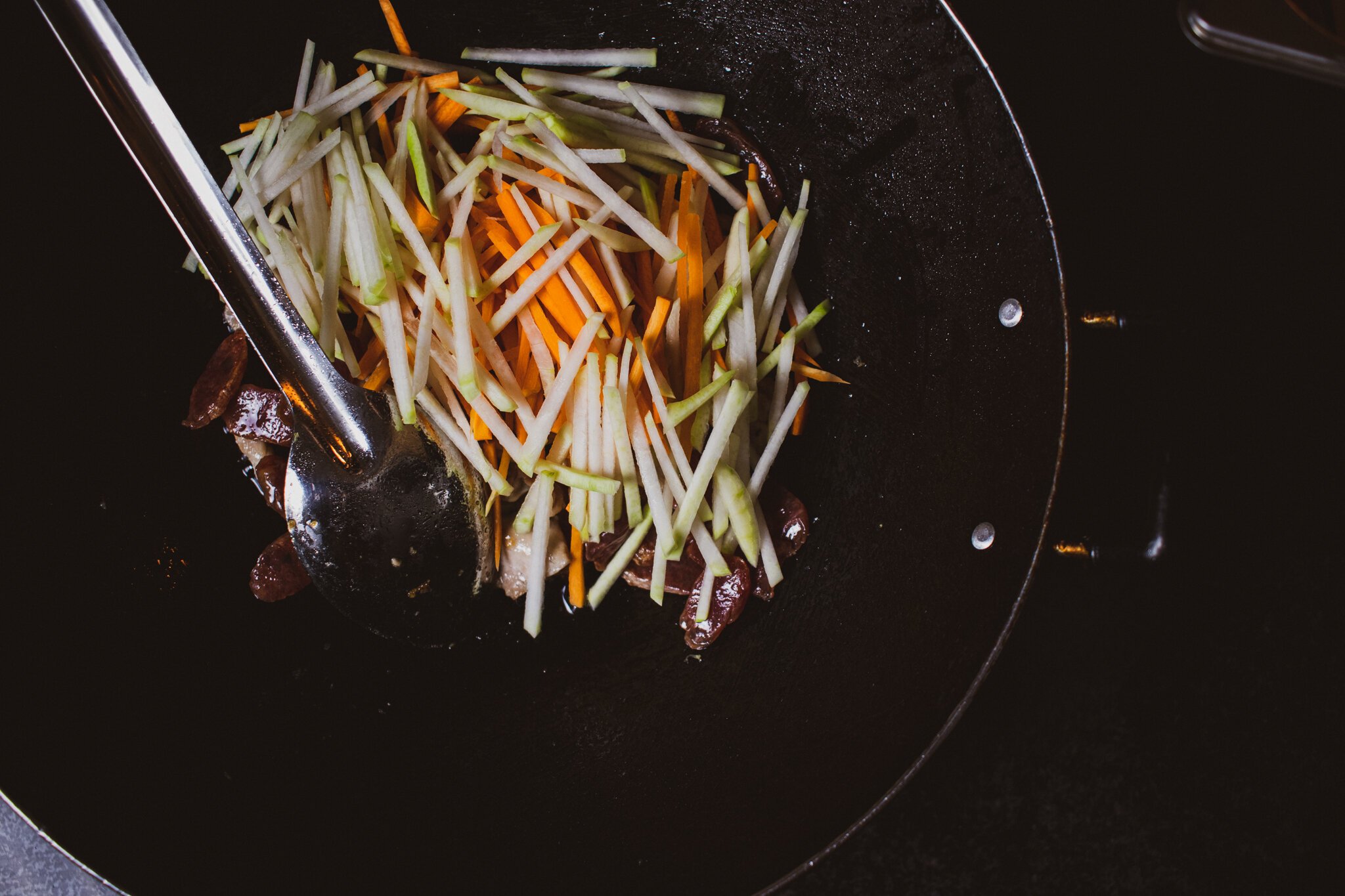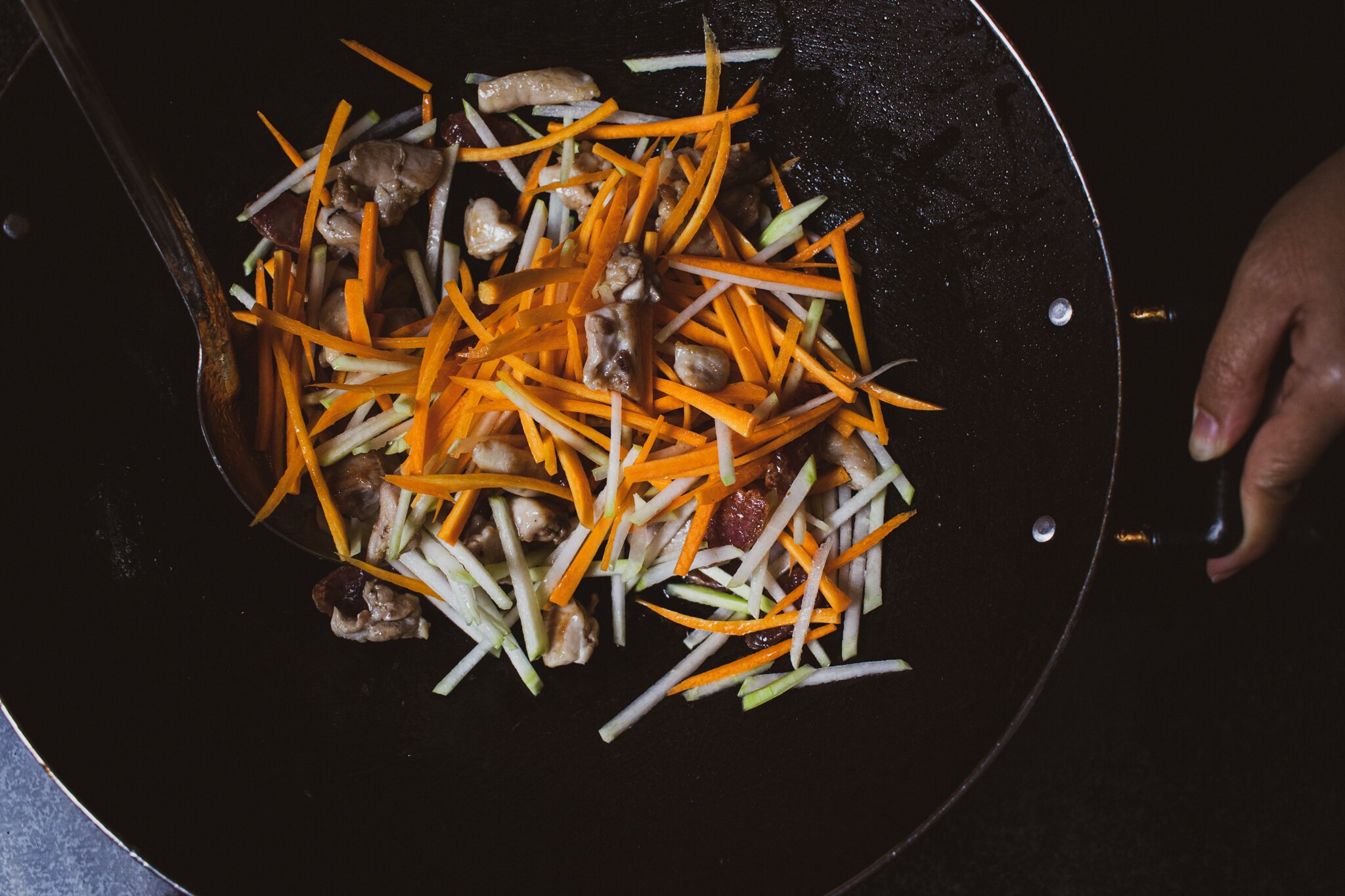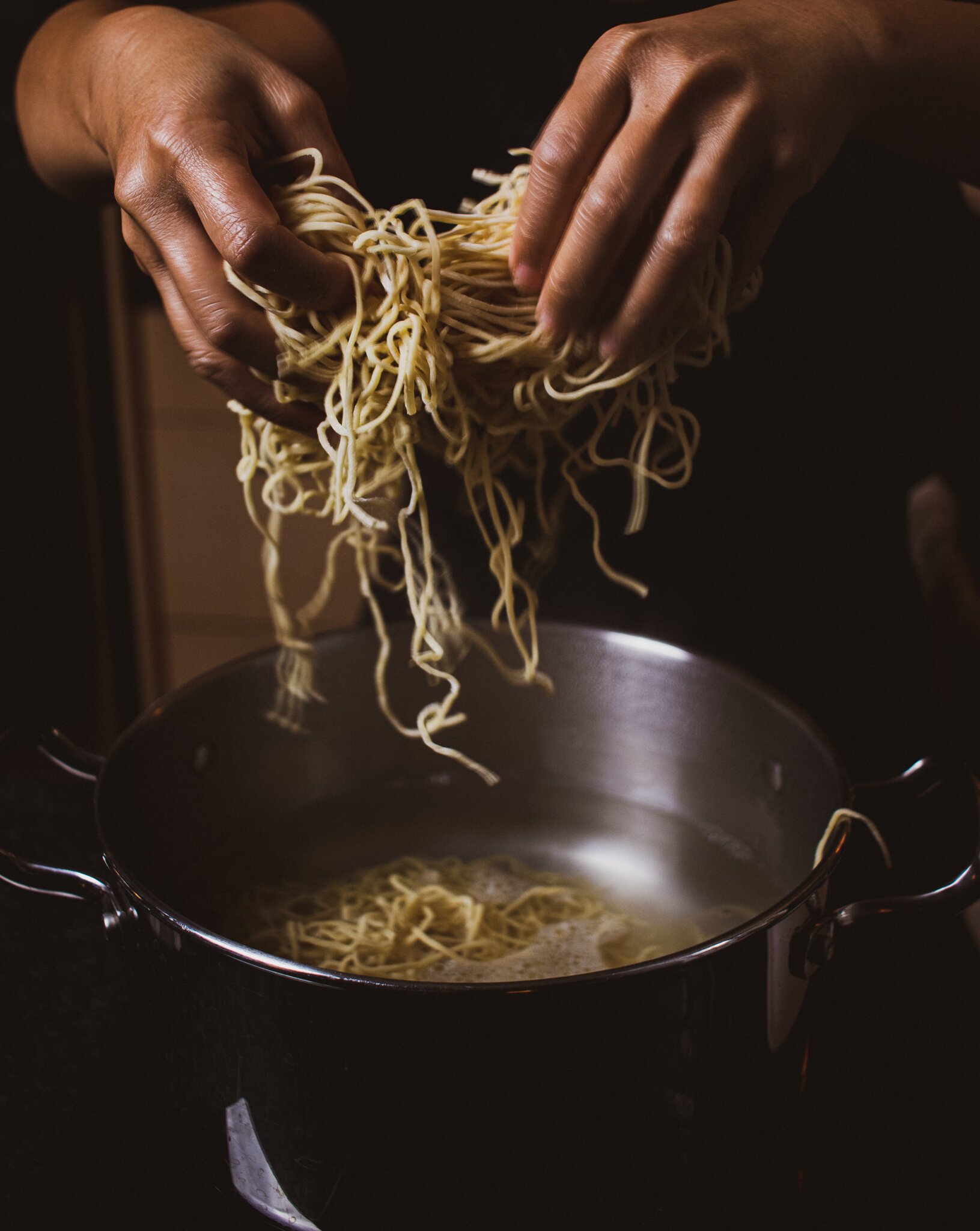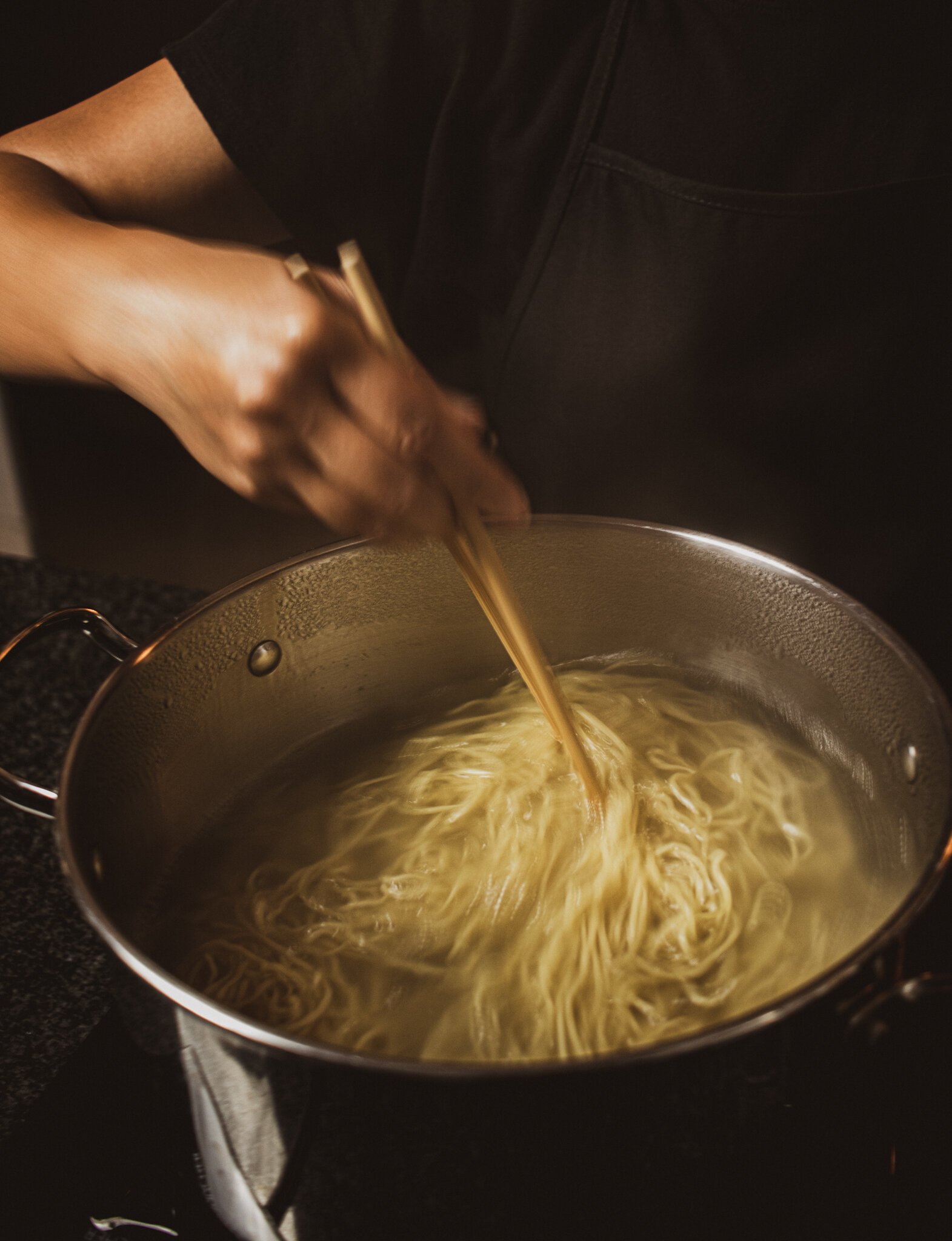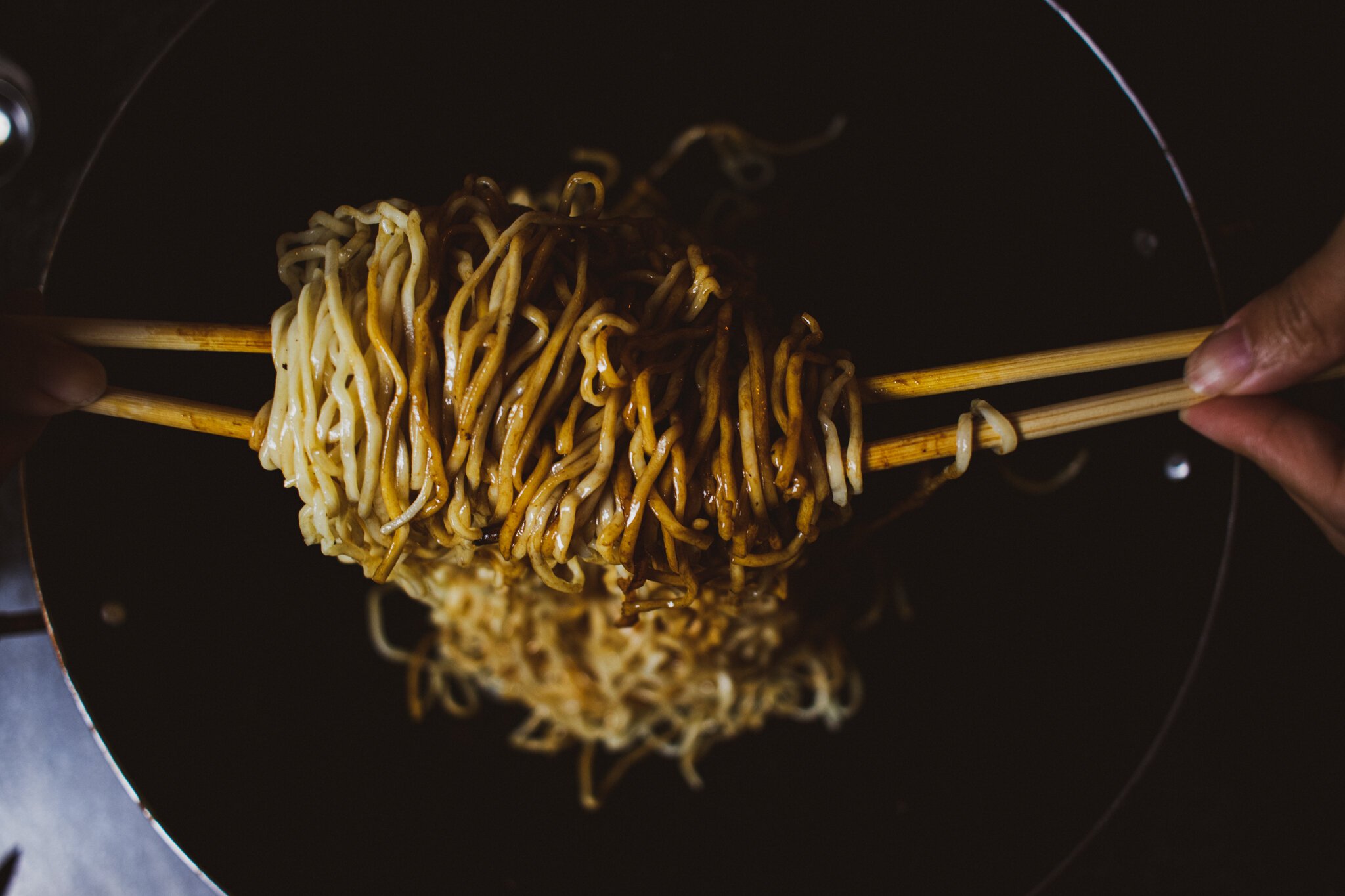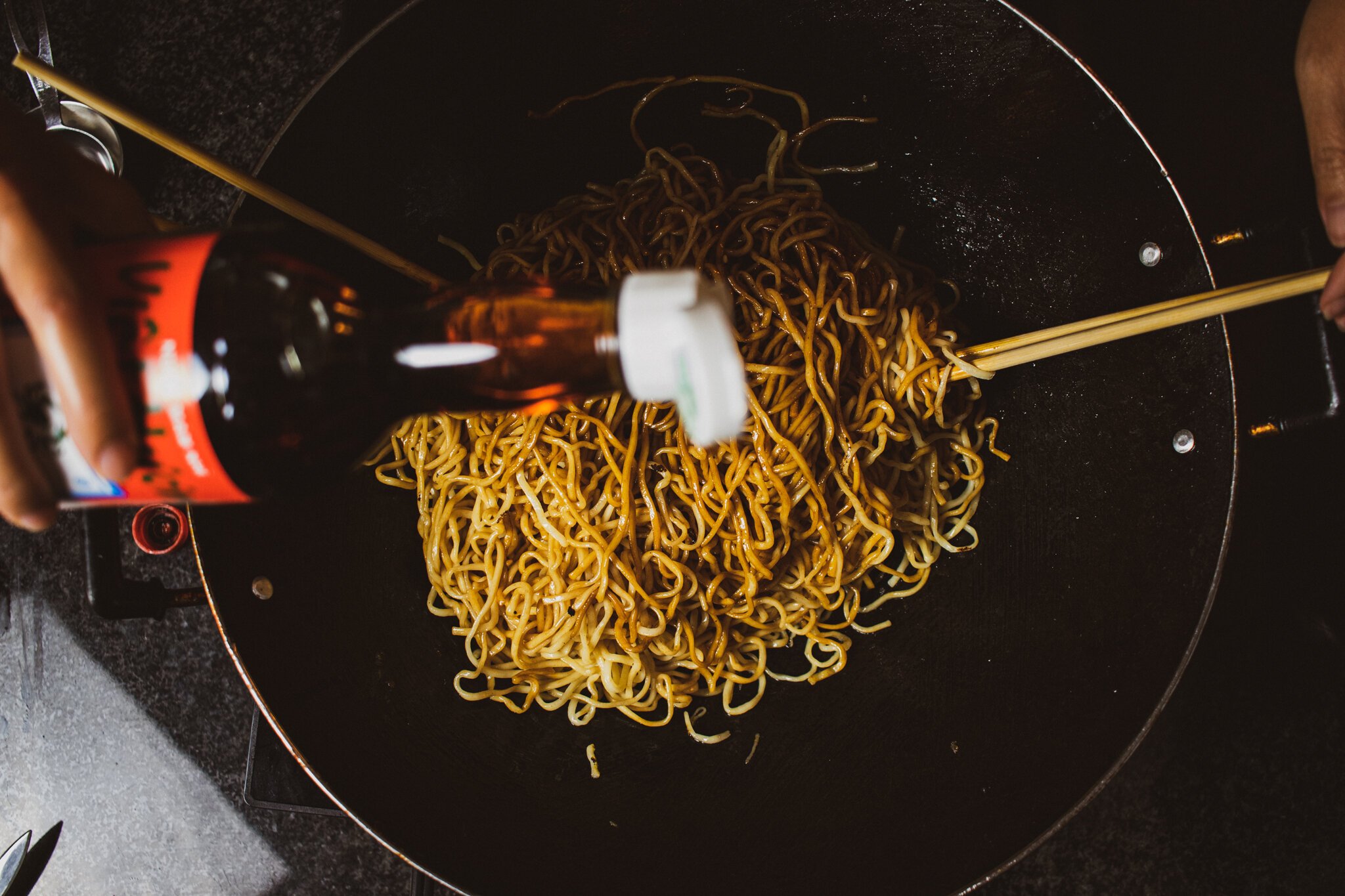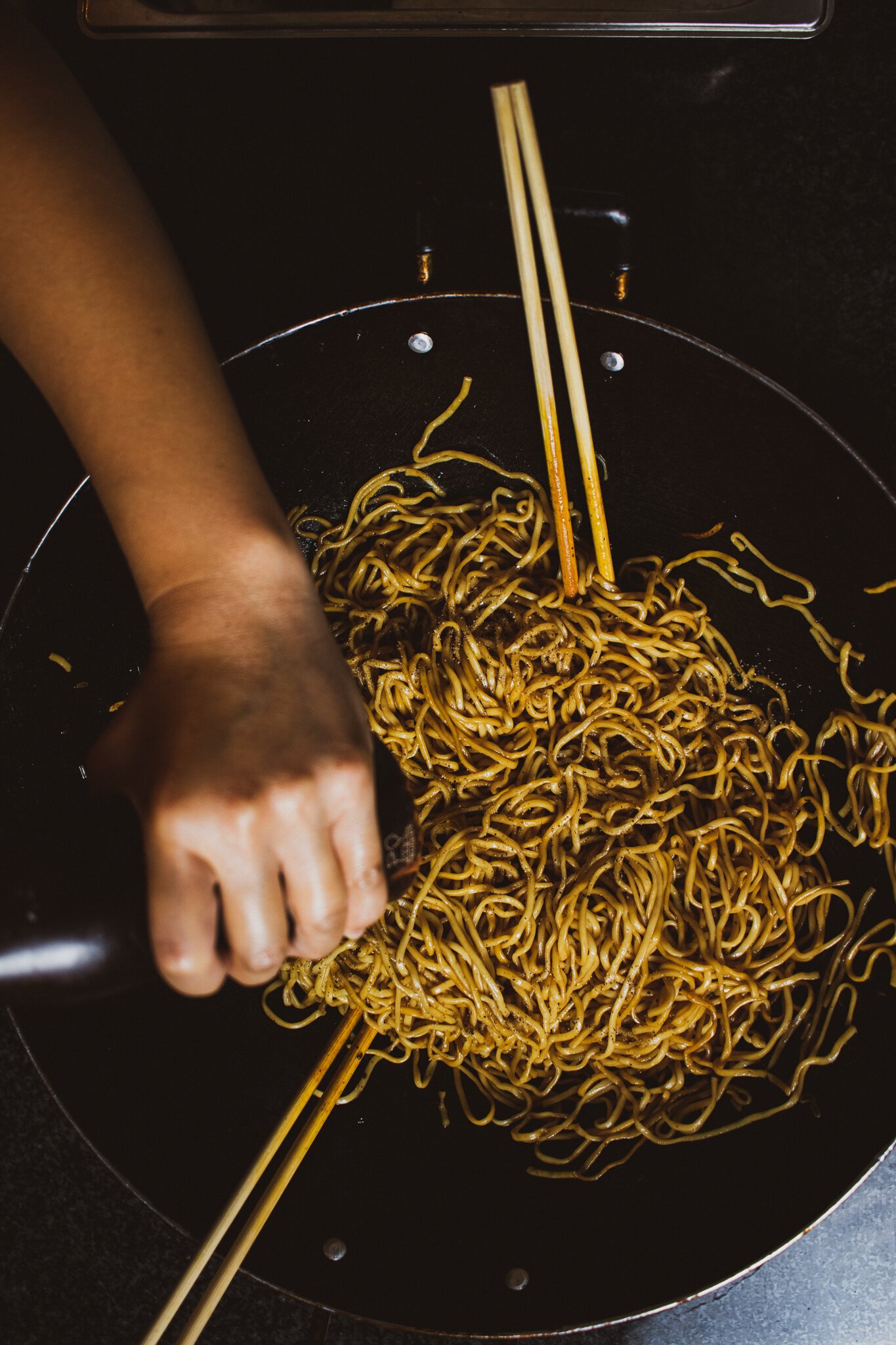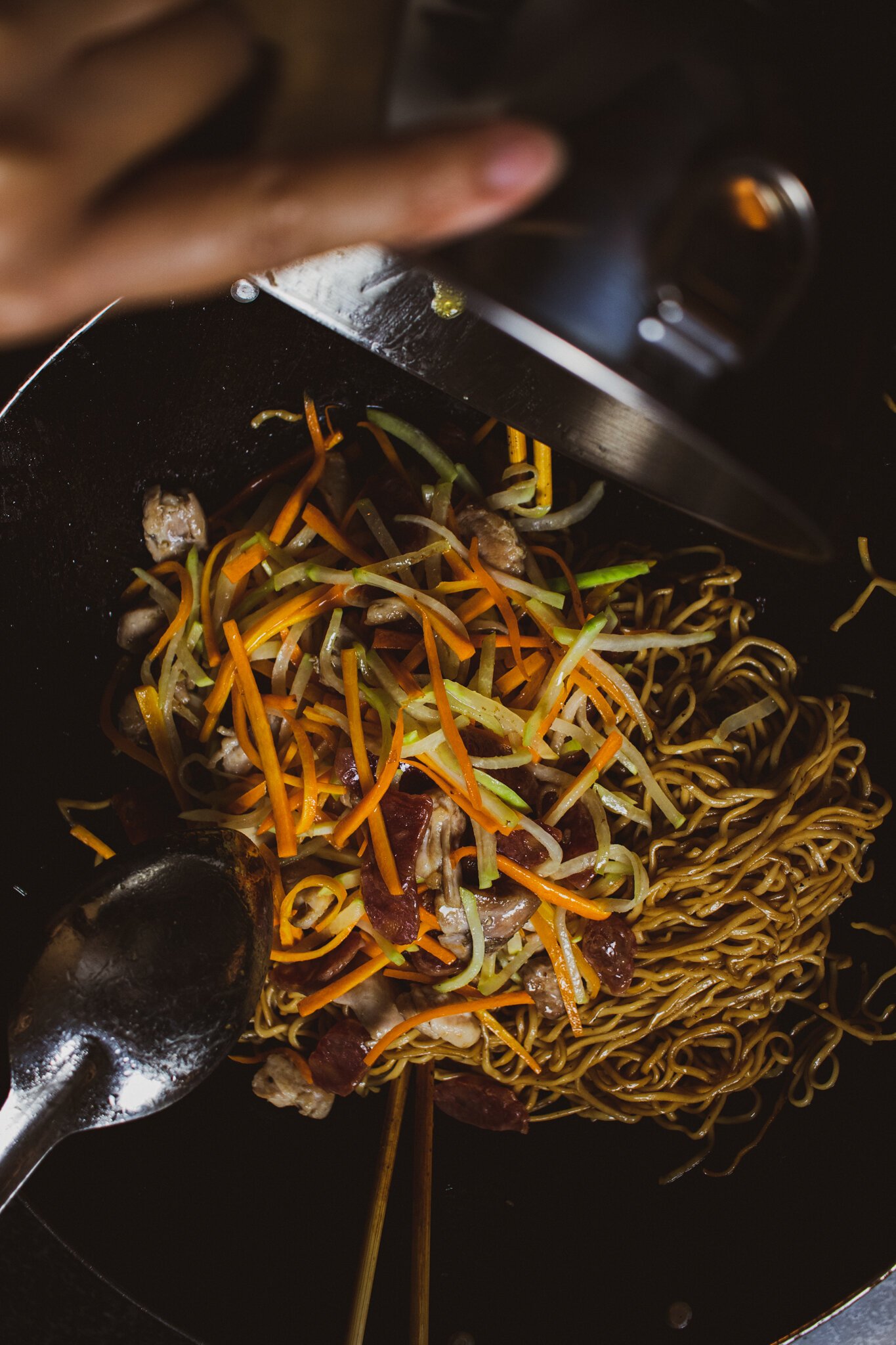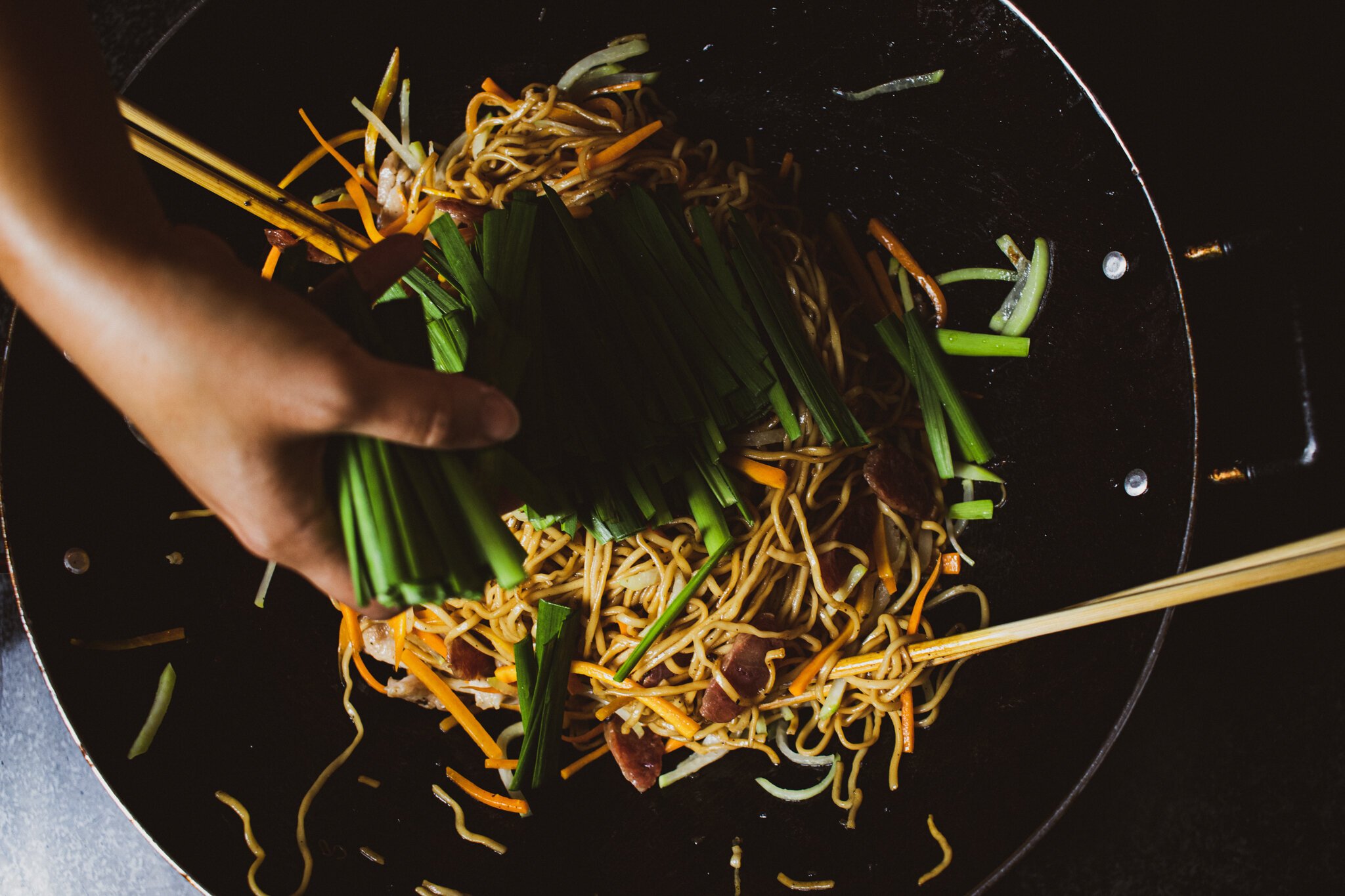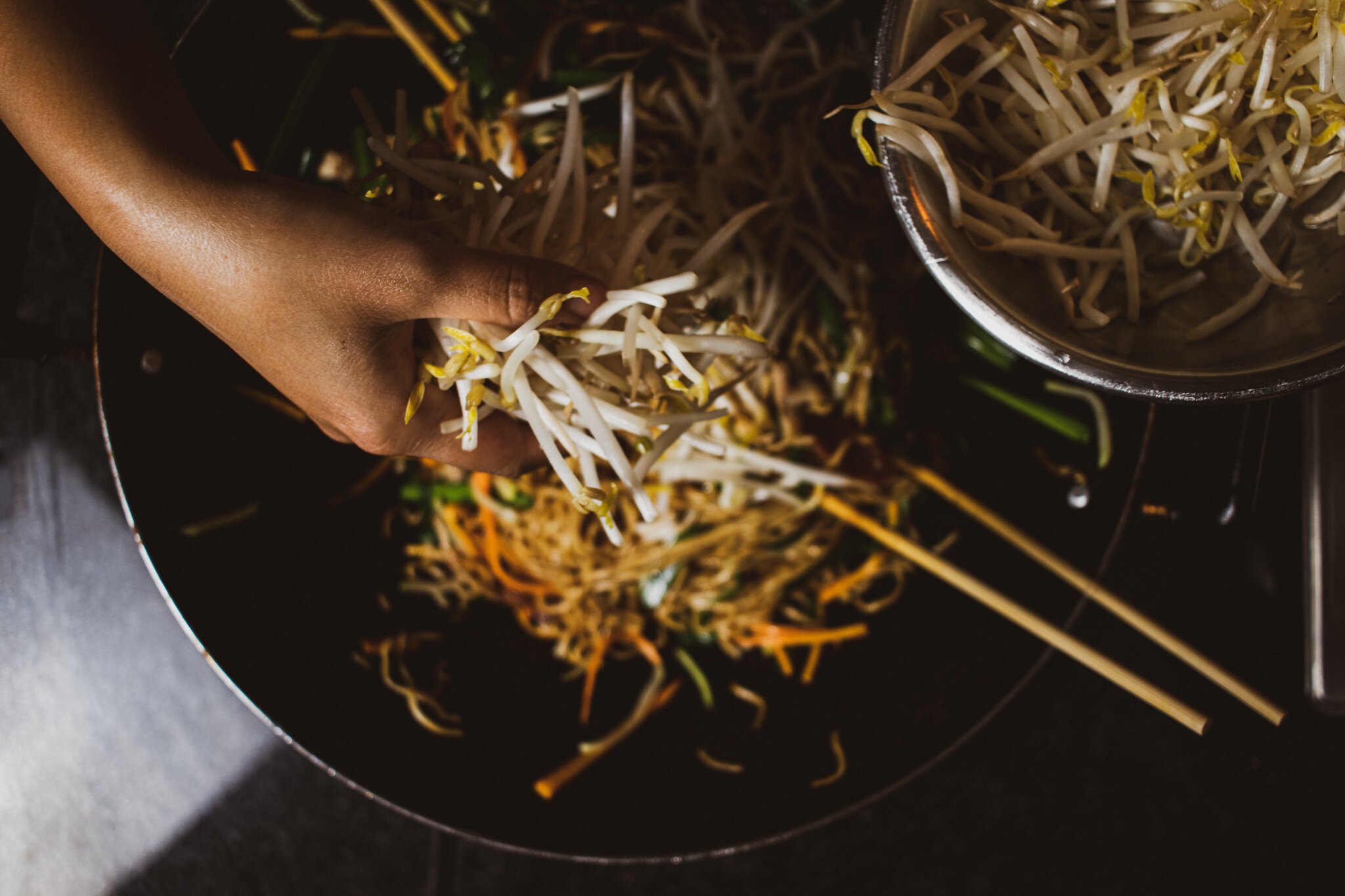A Recipe for Mine Frire (Fried Noodles), The Most Democratized Dish of Mauritius
This is mine frire.
The name of this staple alone exemplifies the diverse ethnic makeup of Mauritius. Mine derives from the Hakka word for noodles, mein. Frire comes from the French word for fry. In Mauritius, it’s among the most democratized of all its dishes - you can get it everywhere and it’s made by everyone.
In fact, on my last visit, I remember waking up severely jet lagged and starving at about 10pm, in an area I had never been to before. Still drowsy, I walked down the dark and eerily quiet street alone in search of food. The shops were closed and there was not a soul in sight. It was death or noodles. You’d be surprised at how many times I’ve found myself in this foolish predicament before - wandering alone at night in unfamiliar territory looking for food like a famished zombie. Luckily, after bargaining with my wild imagination, I pushed myself to walk one more block and found the only whole-in-the-wall restaurant open that late. The young Indo-Mauritian shopkeeper seemed just about ready to call it a night when I stepped in, but he rewarded my persistence with a glorious plate of mine frire. The noodles were chewy, the vegetables crunchy, and everything glistened from just the right amount of oil. It was comforting. It was moreish. I devoured it with glee.
In our family, you might have mine frire for dinner on a casual weeknight, but it’s also the mainstay of every celebration. My grandmother would make it for every family gathering, so when thinking of family or Mauritius, mine frire is hands down my official dish of nostalgia. I’ve been craving it lately. It’s a craving that started with missing my family, long separated by the pandemic, but further triggered by the recent events that have rocked my home country.
If you’re not familiar with Mauritius (not to be confused with Mauritania), it’s an island nation located in the Indian Ocean, some 800km off the east coast of Madagascar. It’s roughly a third of the size of the Greater Toronto Area, with a population estimated at over 1.2M people.
It was apparently uninhabited when first colonized from 1638 to 1710 by the Dutch, who famously ate the native dodo birds into extinction. Then came the French from 1715 to 1810, who introduced African slaves to the island when establishing sugar cane plantations. The earliest Chinese immigrants were brought over from Sumatra by the French through a crimping scheme in the 1740’s, but were later deported when they refused to work in protest of their kidnapping. In the 1780’s, thousands of Chinese arrived to find work, this time voluntarily aboard British, French, and Danish ships. The British took control from 1810 to 1968, and brought with them Chinese, Malay, African, Malagasi, and - in much greater numbers - Indian labourers to work the sugar plantations through indentured servitude after slavery was abolished in 1835. The country finally gained independence in 1968 and is now part of the Commonwealth.
While there are very little Europeans left on the island, the multi-ethnic descendants of the peoples they introduced through centuries of multiple colonizations remain, creating a culture defined as a rich and eclectic melting pot. The pluralism of Mauritian culture is noticeable in its cuisine, which is influenced by Indian, French, African, and Chinese traditions. As a third generation Mauritian Chinese, I grew up eating chicken curry as much as noodles, and salted fish rougaille, maybe even in one sitting.
Today, like many places around the world, Mauritius is in turmoil. A massive oil spill off its coast on July 25, 2020 has had consequences beyond its devastating ecological impact. While thousands of civilians came together without hesitation to clean up the oil spill, the government’s slow reaction and lack of transparency has led to mounting anger among Mauritians who have taken to the streets in the thousands to protest against decades of government corruption.
In honour of Mauritius and its beautiful people who are tirelessly cleaning up the shores while attempting to also clean up the government, I share with you my family recipe for mine frire. I hope that you find it as comforting as I do.
If you’d like to donate to cleanup efforts, you can support local environmental non-profit Eco-Sud here.
Mine Frire
Serves 4
Ingredients
1 (100g) carrot
100g Chinese chives
1 (150g) small kohlrabi
200g bean sprouts
2 (250g) chicken thighs, boneless, skinless (you can also use 1 chicken breast or 250g of pork)
2 Chinese sausages
2 eggs
400g egg white or egg noodles
5 tbs vegetable oil, separated
1 tablespoon dark soy sauce
5 teaspoons fish sauce
¼ tsp black pepper
Salt
Step 1
Put 8 cups of water in a large pot and bring to a boil.
Meanwhile, julienne the carrot, kohlrabi, and Chinese chives into pieces roughly 2-inches long. Rinse and drain the bean sprouts.
Step 2
Slice the Chinese sausages diagonally, about 2mm thick. Cut the chicken in bite-sized chunks of about 1 inch in size.
Step 3
In a wok or large frying pan, drizzle 2 tbs of vegetable oil and set to high heat. Beat the eggs and add a pinch of salt. Once the oil is hot and smoking, gently pour the eggs in. High heat and lots of oil will give the eggs a fluffy texture, similar to a Thai omelet. When the bottom is nice and golden, flip over to cook through. Lift the omelet with a slotted spatula to drain some of the oil and place on a cutting board. Once the egg is cool enough to touch, slice into strips of about 2 inches long.
Step 4
Lower the heat to medium-high and add 1 tbs of vegetable oil. Toss in the chicken and once browned, add the Chinese sausages. Continue cooking for about 1 minute, then add the carrots, kohlrabi, and a generous pinch of salt. Sauté for about 2 minutes or until everything is cooked through, the vegetables still crunchy. Transfer to a bowl and set aside. Turn off the heat.
Step 5
By now, the water should be boiling. The noodles will be tightly packed, so loosen and untangle them before you toss them into the boiling water. Stir using chopsticks to make sure the noodles aren’t sticking together. Boil for 1 to 1.5 minutes depending on the noodles you’re using. Make sure to read the package instructions. Previously steamed egg noodles will take less time (1 minute). It’s imperative that you not overcook the noodles. When done, drain the noodles using a colander, rinse with cold water to stop the cooking, and give it a good shake. Drizzle a touch of oil, toss and coat the noodles so they don’t stick together.
step 6
Now the fun part! Add the remaining 2 tbs of vegetable oil to the wok/pan and bring to high heat. Once the oil is hot and steaming, add the noodles, the dark soy sauce, the fish sauce and the pepper. Using tongs or chopsticks, toss the noodles vigorously to ensure even coating. I prefer using double chopsticks - I find it more effective in getting the sauce between the noodle strands. Once the noodles are evenly coloured, lower the heat to medium.
step 7
Add the meat, vegetable mixture, and Chinese chives to the noodles. Mix well and cook for about a minute. Add the bean sprouts. Continue tossing everything together until the chives are wilted and dark green, the bean sprouts are cooked, but still crunchy, and the ingredients are well incorporated. Turn off the heat and transfer to a serving dish. Sprinkle the eggs on top and serve.
Enjoy!
Recipe Notes
For a vegetarian version - simply omit the meat and replace the fish sauce with salt. Feel free to add more vegetables and eggs to make it more robust.
Noodles - my family often uses steamed Cantonese egg noodles. Since they’ve been steamed, they’ll take less time to boil, usually 1 minute. You’re actually just blanching them. If the noodles are raw, they’ll need a little more time. Again, check the packaging and boil for the minimum amount of time when given a range.
Seasoning to taste - if the noodles are lacking a bit of saltiness, you can add more fish sauce to taste. Don’t add more soy sauce - more soy sauce will just make the noodles darker, but won’t compare to the added umami flavour of more fish sauce.
Words by Kimberley Kwo. Photos by Nick Wong and Kimberley Kwo.


